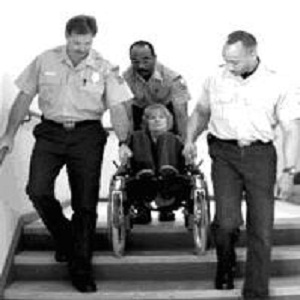How to Evacuate a Building in an Emergency

Evacuations are made necessary when disaster strikes or part of the preparation for any sort of emergencies. Most buildings have alarm systems which ring throughout the area to warn people to move out. Some places however still rely on verbal warnings which take longer. Although many places do have emergency drills to train people how to act in these situations, most people lose their nerves when they hear such an alarm. Many others are even unaware of how to act in the first place.
Whether it is a fire, an earth quake or a terrorist activity, people should know some life saving evacuation basics. Our step by step guide has some tips to help you evacuate safely from a building in case of an emergency.
Instructions
-
1
Get to know the emergency exits of a building:
You should know the emergency exits of the office you work in or the shortest way out of your house. This will help you when the actual evacuation process starts and prevent you from panicking. If you are new to a building and an evacuation is ordered, follow the signs that lead to emergency exits. If there are none, follow the main crowd out.
-
2
Do not panic:
Panicking will only cause problems. Safely close down your work, gather your medicines if they are near ( in case you are not allowed back in to the building for long). leave all other belongings behind as your life is most important. Move to the shortest route out (usually designated as the emergency exit). Move quickly but calmly. As there will be others moving with you, running will just cause jostling and stampede. Do not shout or cause panic among others. Remain with the crowd because if anything nasty happens, the search team will make probabilities about the majority people's location first.
-
3
Use the stairs:
Do not use the elevators. It has two reasons. Firstly in any calamity the power is likely to disappear leaving you trapped in the elevator without any proper ventilation. Secondly during evacuation of a large number of people only few can avail the elevator. The stairs are a safer option as a large number of people can use it at one time in an orderly manner.
-
4
Help people with disabilities:
If you have colleagues or family members with disabilities guide them towards the exit. However do not turn back for them if the building is at risk and you are already out. Notify the rescue team about the location and they will do the job better than you.
-
5
Wait in safe area:
Once out, wait in a safe area, away from the building. Regain your senses and look for any way you could help, as long as it does not contain going back to the building. You could make a list of the missing people and ask around as to where they were last seen so that rescue teams could gain an idea. However do not create hassle and panic. Enter the building only when the security or rescue teams declare it safe and allow you to do so.








